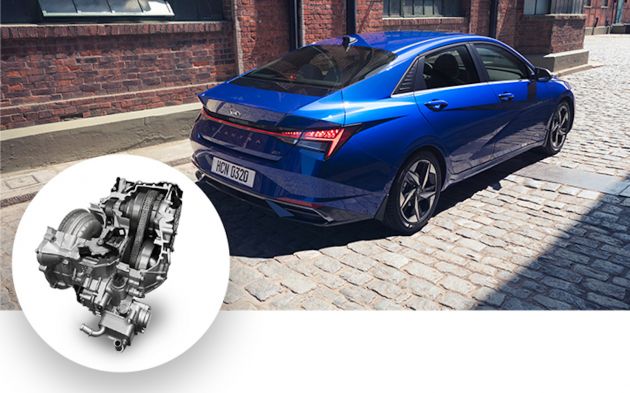Hyundai iVT gearbox – chain belt-based continuously variable transmission for better response, efficiency
In a conventional continuously variable transmission (CVT) design, the stepless change in ratios are made possible by a pair of pulleys which expand and contract, connected by a metallic belt. This is the gearbox of choice in many cars designed with economy in mind, though its nature means that the rise and fall of an engine’s RPM when paired with a stepped transmission is replaced by a more constant droning sound.
With the Smartstream iVT (intelligent variable transmission), Hyundai has replaced the conventional CVT belt with a chain belt, which aims to combine the efficiency of conventional CVT transmissions with improved response when changing ratios, as well as more a efficient output transfer. The Smartstream iVT reproduces the shift pattern of a manual transmission that better reflects the driver’s intent for a more responsive feel.


The chain belt in the Hyundai iVT uses the belt tension to adjust the the pulley diameter, this way eliminating belt slippage and improving efficiency as a result. The chain belt is maintenance-free and also has a longer lifespan than a conventional CVT belt, making for improved reliability, says Hyundai.
This transmission features in the latest-generation Hyundai Elantra, where it is paired with the Smartstream G 1.6 MPi engine that produces 123 PS at 6,300 rpm and 154 Nm of torque at 4,500 rpm. Here, the Smartstream iVT offers a 4.2% improvement in fuel consumption and 5-8% reduction in power loss, says Hyundai.
The Smartstream transmission is designed and built in-house at Hyundai Transys, which is a merger of Hyundai Powertech and Hyundai Dymos. The Korean manufacturer also claims that it is currently the only company in the world to have comprehensive technology for all transmission types, which is constantly evolving alongside the progress of performance and technology of its engine development.
GALLERY: 2021 Hyundai Elantra

























The post Hyundai iVT gearbox – chain belt-based continuously variable transmission for better response, efficiency appeared first on Paul Tan's Automotive News.
from Paul Tan's Automotive News
Read The Rest:paultan...



Post a Comment